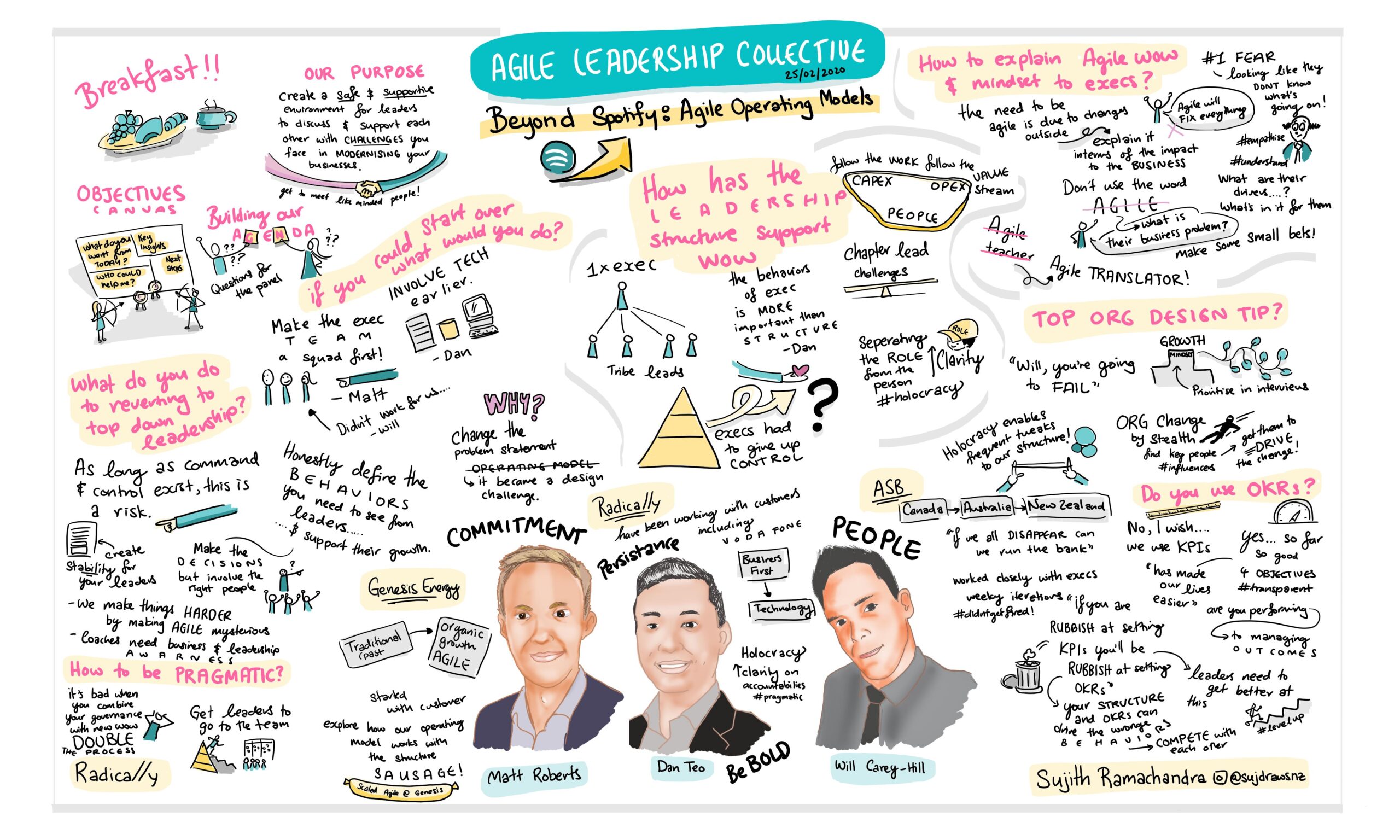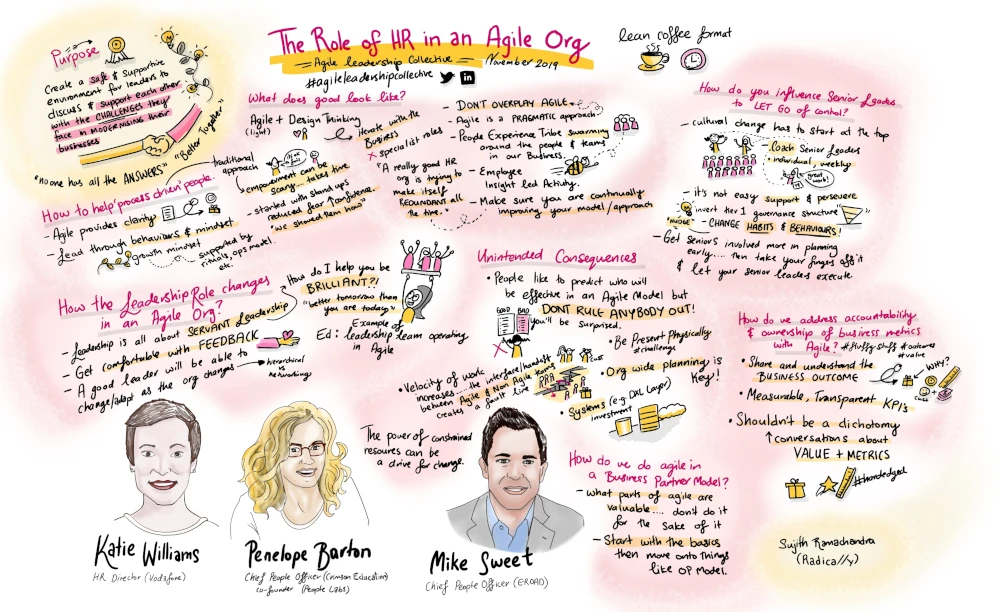Agile Operating
Models – beyond Spotify
Spotify created and published a model that worked for their engineering culture at the time. Since then, they have continually adapted it to meet their changing needs. Despite them specifically advising others not to copy their model, it has become the default model many companies adopt for scaling agile for the enterprise. This Agile Leadership Collective meeting “Agile Operating Models – beyond Spotify” focused on developing your own fit-for-purpose operating model.
Our panel consisted of
Matt Roberts, Group Manager – Agile at Genesis Energy
Dan Teo, CEO of Radically
Will Carey-Hill, Senior Manager Customer Experience Transformation at ASB
The panellists bought their experience with other models, including customisations and bespoke models they’ve applied. Matt shared how Genesis evolved their use of the Spotify model to make it a better fit for their situation. Will talked through his experiences at BankWest and ASB. Dan shared what it has been like developing a custom operating model based on Holacracy but again evolved to meet Radically’s specific needs.
The discussion from all three panellists also covered leadership, how to obtain executive buy-in and support, Holacracy, and avoiding “capital A” agile. there was also extensive discussion on operating models versus human behaviours, and how the end outcome we are aiming to achieve is a shift to more collaborative, team-based behaviours and that any operating model should be based on those principles. There was a lot of focus on pragmatism, and how we can apply the things learned in Spotify without having to directly copy everything they did. There was also discussion on the move to agile with executives, and how the increasingly changing business landscape is shifting the conversation to being more adaptive.
Sujith Ramachandra has again produced a beautiful visual canvas. For a high-resolution version, click on the picture below.

